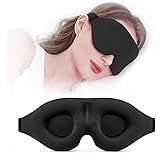Mastering Sub-Zero Sleeps: Thermarest Xtherm NXT vs. Nemo Tensor Extreme Conditions
Choosing the right **sleeping pad** is paramount for survival and comfort when venturing into extreme cold environments. The difference between a peaceful night’s rest and a shivering ordeal often comes down to this single piece of gear. The video above dives deep into two leading contenders for **cold weather sleeping pads**: the Thermarest Xtherm NXT and the Nemo Tensor Extreme Conditions. This article expands on those crucial insights, helping you select the perfect companion for your next sub-zero adventure.
Both the **Thermarest Xtherm NXT** and the **Nemo Tensor Extreme Conditions** represent the pinnacle of modern **winter sleeping pad** technology. Our in-depth comparison will examine their real-world performance, moving beyond laboratory ratings to reveal which pad truly excels when pushing the limits of temperature. We will focus on key aspects like durability, overall comfort, and, most importantly, their ability to deliver unwavering warmth in the harshest conditions.
Understanding R-Value: More Than Just a Number
When selecting a **cold weather sleeping pad**, the R-value is often the first metric people consult. This numerical rating quantifies a material’s thermal resistance, essentially measuring its ability to prevent heat transfer. Think of it like the insulation in your home; a higher R-value means better insulation, keeping the warmth in and the cold out. The Xtherm NXT boasts an R-value of 7.3, while the Tensor Extreme Conditions offers an impressive 8.5, suggesting superior warmth on paper.
However, the video highlights a critical limitation: R-value testing is conducted in a controlled laboratory setting. While it provides a reliable baseline, it often doesn’t capture the complex dynamics of real-world use. Factors like a pad’s internal construction, baffling patterns, and how well it maintains its insulating properties when compressed or exposed to dynamic air movement can significantly alter its practical performance in the field. This nuance becomes especially crucial when facing temperatures well below freezing, where every degree of warmth makes a profound difference.
Decoding Heat Loss: Radiative vs. Convective
To truly understand how these **expedition sleeping pads** keep you warm, it is helpful to differentiate between two primary forms of heat loss: radiative and convective. Radiative heat loss occurs when your body emits infrared energy, similar to how a campfire radiates heat. Without proper insulation, this warmth simply escapes into the cold ground below. Convective heat loss happens when warm air around your body rises and is replaced by colder air, creating a continuous cycle of heat depletion. Imagine a thin, warm blanket with holes; the air moving through those holes would quickly carry away your body heat.
Effective **winter camping gear** must combat both these mechanisms. Manufacturers employ various technologies, such as reflective films and intricate baffling systems, to minimize heat loss. The Xtherm NXT and Tensor Extreme Conditions utilize distinct approaches to tackle these challenges, leading to varied real-world results that impact your sleep in extreme temperatures.
Durability: A Lifeline in Sub-Zero Terrain
In conditions as unforgiving as minus 40 degrees Celsius, a gear failure is not merely an inconvenience; it can be life-threatening. The durability of your **inflatable pad** is therefore non-negotiable. Both Nemo and Thermarest offer commendable lifetime warranties, providing peace of mind for long-term use. However, as the video aptly points out, a warranty offers little comfort when your pad fails miles from civilization in bitter cold.
The construction materials and methods diverge significantly between these two **backpacking sleeping pads**. The Nemo Tensor Extreme uses a 20-denier (20D) nylon on top and a 40D nylon on the bottom. In contrast, the Thermarest Xtherm NXT features a 30D top and a more robust 70D bottom. Denier refers to the thickness of the individual fibers in the fabric; higher denier numbers indicate a thicker, stronger material. The Xtherm’s higher denier ratings, particularly on the bottom, suggest superior resistance to abrasion and punctures, a critical advantage when sleeping on rough, frozen ground. It’s like comparing a lightweight rain jacket to a heavy-duty tent floor; both are nylon, but one is designed for much tougher abuse.
Baffling and Valve Systems: Small Details, Big Impact
Beyond the outer shell, the internal construction of an **ultralight sleeping pad** plays a significant role in its longevity. The Xtherm NXT employs Thermarest’s proven Triangular Core Matrix baffling system, a design the reviewer has consistently found reliable over many years and countless nights. This system creates isolated air cells, which not only enhance warmth but also contribute to structural integrity.
Conversely, the Tensor Extreme relies on a system of welded seams connecting the top and bottom of the pad. While this design has its advantages, the reviewer has experienced weld failures with older Nemo pads, leading to slow leaks. Although the Tensor Extreme features an evolved weld system, the possibility of this vulnerability remains a point of concern for some. A small leak can quickly turn a warm night into a freezing one, like a tiny hole in a boat slowly letting in water.
Valve systems also factor into durability. The Thermarest valve is celebrated for its robust construction and, importantly, its replaceability in the field. Should it fail, a spare can be easily swapped in. The Tensor’s valve, while efficient for inflation, likely requires a return to the manufacturer for repair, a significant drawback if you’re mid-expedition.
Comfort: Your Sanctuary in the Snow
Even the warmest **sleeping pad** is ineffective if it prevents restful sleep. Comfort is a subjective yet vital factor, heavily influenced by a pad’s thickness and baffling pattern. The Xtherm NXT is 3 inches thick, which, while functional, is considered by many to be the minimum for comfort, especially for side sleepers. Its horizontal baffles can create pressure points, leading to numb arms or discomfort as your weight concentrates on specific ridges. It can feel like lying on a series of firm horizontal logs, making shifting positions a frequent necessity throughout the night.
The Nemo Tensor Extreme Conditions offers a slightly more generous 3.5 inches of thickness. This extra half-inch provides a noticeable improvement in cushioning and allows for subtle adjustments in inflation. Slightly deflating the pad can mold it more effectively to your body, although it is important to remember that reducing air also slightly reduces its insulating R-value. The Tensor’s modified horizontal baffle system, with its unique “dimples” created by the weld points, is a clever design. These dimples help distribute pressure more evenly, making it a more forgiving surface for side sleepers. It’s like adding small, soft cushions between the logs, providing much-needed relief.
Noise Levels: A Silent Night’s Sleep
Another aspect of comfort in the backcountry is noise. The Xtherm NXT, with its internal Mylar insulation, is known for its distinctive “crinkly” sound, which can be disruptive for some sleepers. Imagine trying to sleep wrapped in a foil blanket; that’s the kind of sound we’re talking about. The Tensor Extreme, conversely, is noticeably quieter, offering a more serene sleep experience. While the reviewer found the Xtherm’s noise manageable, individuals sensitive to sounds might find the Tensor’s silence a significant advantage when seeking deep rest in remote winter environments.
Warmth: The Ultimate Test in Extreme Cold
Ultimately, the primary function of a **cold weather sleeping pad** is warmth. This is where the true performance of the Xtherm NXT and Tensor Extreme Conditions is put to the ultimate test. Both pads utilize sophisticated insulation strategies to achieve their impressive R-values.
Advanced Insulation Technologies
The **Thermarest Xtherm NXT** achieves its 7.3 R-value by combining two powerful technologies. First, Thermacapture technology incorporates multiple layers of reflective film within the pad, acting like a series of microscopic space blankets to prevent radiative heat loss. Second, the Triangular Core Matrix baffling system effectively minimizes convective heat loss. By compartmentalizing the air inside the pad into numerous small cells, it drastically reduces air movement, preventing warm air from circulating and escaping. Think of it as a tightly packed honeycomb structure, where each cell traps warm air.
The **Nemo Tensor Extreme Conditions**, with its higher R-value of 8.5, employs four layers of Mylar film suspended on proprietary trussels inside the pad. This system is primarily designed to combat radiative heat loss, reflecting your body heat back upwards. It’s akin to having several very thin, shiny sheets floating above each other, creating multiple reflective barriers. However, a key difference emerges here: the Tensor Extreme lacks a dedicated convective heat loss mechanism comparable to the Xtherm’s Triangular Core Matrix. This structural difference, as the video reveals, can have profound implications for real-world warmth.
Field Performance: When Lab Numbers Don’t Tell the Full Story
The reviewer’s extensive field testing, spanning temperatures from minus 20 degrees Celsius down to minus 50 degrees Celsius, offers invaluable insights. The Xtherm NXT consistently delivered exceptional warmth, keeping the reviewer “toasty warm” even at minus 40 degrees Celsius when used alone, and down to minus 50 degrees Celsius with an additional foam pad. Its performance was reliable and predictable, a testament to its robust design.
The **Nemo Tensor Extreme Conditions**, despite its higher R-value, presented a puzzling challenge at colder temperatures. While it performed well at minus 20 to minus 25 degrees Celsius, issues began to surface below minus 30 degrees Celsius. The reviewer hypothesizes two main reasons for this discrepancy. Firstly, the lack of a strong convective heat loss mechanism in the Tensor, combined with its larger surface area (in the wide version tested), might create a thin layer or “channel” of air above the Mylar films that can allow warm air to escape, similar to a subtle but constant cold draft. Secondly, the Mylar films themselves might occasionally stick together, compromising their ability to reflect heat effectively. This potential “sticking” was observed to be mitigated by shaking the pad, which seemed to restore some of its insulating power. This anecdote highlights the unpredictable nature of gear performance in extreme conditions and underscores the limitations of R-value testing in predicting nuanced field behavior.
The impact of pad size also plays a role. A large, wide pad like the one tested has a greater surface area, which could potentially exacerbate convective heat loss issues. Opting for a smaller, mummy-shaped version of the Tensor Extreme might reduce the overall air volume and minimize the potential for heat loss channels, leading to a warmer sleep. This adaptation is a clever strategy for optimizing an otherwise comfortable pad for colder conditions.
Price, Weight, and Ease of Use: Practical Considerations
While durability, comfort, and warmth are primary concerns, practical aspects like price, weight, and ease of use also influence the choice of a **winter sleeping pad**. The **Thermarest Xtherm NXT** (large rectangular) costs approximately $240 and weighs 680 grams (24 ounces). The **Nemo Tensor Extreme Conditions** (large wide) is priced around $270 and weighs a slightly lighter 662 grams (23 ounces). The differences in price and weight between these two premium **expedition sleeping pads** are minimal, making them less of a deciding factor.
Ease of use primarily relates to inflation. The Tensor Extreme gains a slight edge here, thanks to its efficient valve system and the included inflation bag. In cold conditions, with gloved hands, a user-friendly inflation process can make a significant difference, saving time and reducing the risk of introducing moisture into the pad from breath inflation.
Choosing Your Expedition Partner: Xtherm vs. Tensor Extreme Conditions
Deciding between the **Thermarest Xtherm NXT** and the **Nemo Tensor Extreme Conditions** ultimately boils down to your personal priorities and the specific temperatures you anticipate facing. The Xtherm NXT stands out for its undeniable reliability and consistent warmth in the most extreme, sub-zero conditions, performing flawlessly down to minus 40 and even minus 50 degrees Celsius. It’s the steadfast workhorse you trust when failure is not an option.
Conversely, the **Nemo Tensor Extreme Conditions** offers superior comfort and a quieter sleep experience, making it a highly appealing option for many **winter camping** enthusiasts. If your adventures typically involve temperatures ranging from minus 10 to minus 25 degrees Celsius, and you prioritize a plush, peaceful night’s sleep, the Tensor Extreme is an excellent choice. However, for those pushing beyond minus 30 degrees Celsius, the Xtherm’s proven warmth and robust construction provide a more dependable safeguard against the cold. Your choice of **cold weather sleeping pad** is a critical component of your overall sleep system, working in tandem with your sleeping bag and shelter to create a warm and safe haven in the wilderness.








